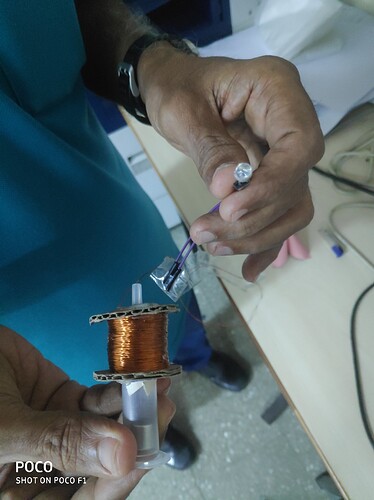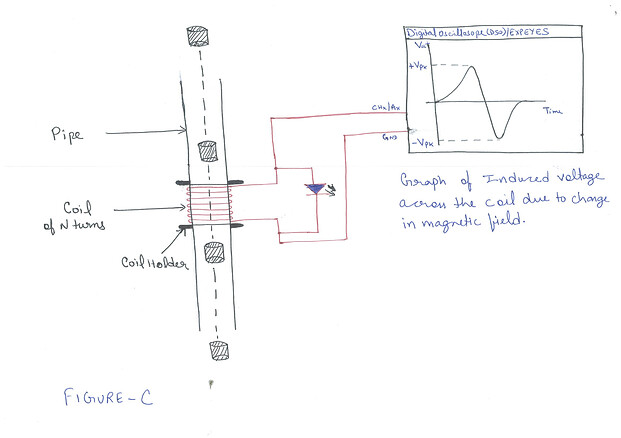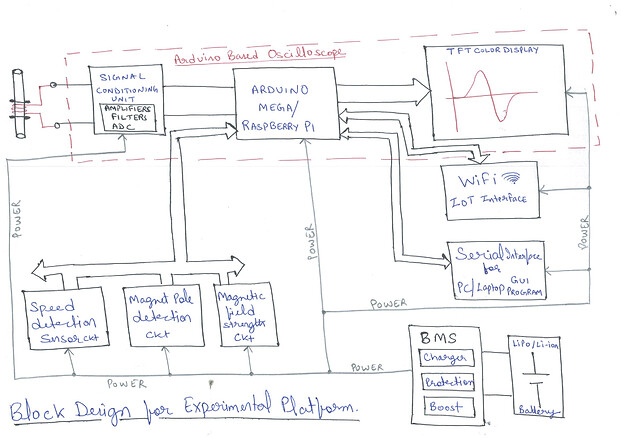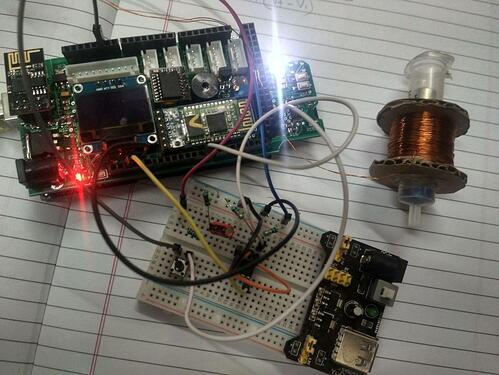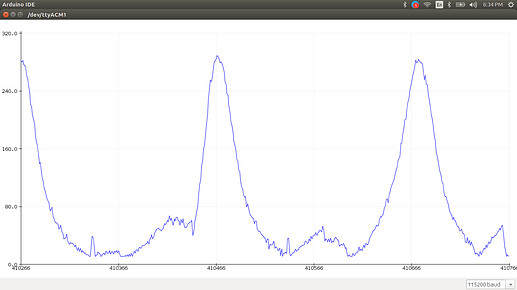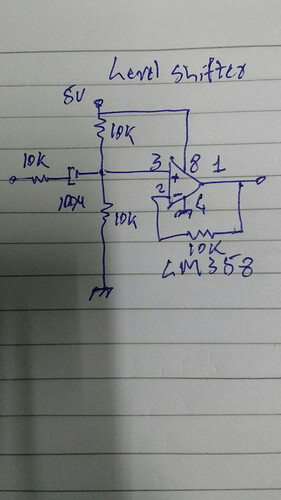Qualitative Observation
The phenomenon which we observe but not measure leads to qualitative data.
As there is no measurement involved, which means there will be no data available in numbers. Thus there will be no fact discovery, no numerical comparisons can take place and no statistical analysis can happen.
So Qualitative approach leads to dynamic and negotiated reality where we interpret or make sense of phenomenon of what meaning we bring to us.
Consider a simple but historical experiment " Faraday’s Law of Electromagnetic Induction (EMI)"
I will not write what it is as all of us know about it but show you a simple sketch below.
In the Figure - A led will not glow at all as there is no magnet passing through the coil via pipe. In other words there is no change of magnetic flux across the coil.
In the Figure - B led will glow on for a few milliseconds as during the passage of magnet across the coil via pipe.
So the qualitative observation here is the glow of a led for few milliseconds and nothing else during the change of magnetic flux across the coil.
[center]
[/center]
Quantitative Approach
The phenomenon we observe as well as measures it in numerical form which can be classified into categories, measured in measurement units or in different rank orders etc.
The data/facts are discovered with fixed and measurable reality which can be used to construct tables and graphs of raw data.
This Statistical analysis turns data into useful information which can help us to test theory/qualitative observation/hypothesis in order to reject or support the subject.
Now again bringing back the same “Faraday’s Law of Electromagnetic induction (EMI)”
In Quantitative approach, with qualitative observation we will also get some measured data as shown below.
In Figure - C with the glow of led momentarily, we are also measuring the voltage induced across the coil due to change in magnetic flux and also plotting the graph.
So in this case we came to know that there is also a negative peak (a set of negative voltage points), now the question rises what is that and why it is there? (a very simple question probably we all know but the point here is that quantitative approach leads us to more depth of investigation).
There are more questions to arrive:
Can variation in number of turns of coil vary the induced voltage?
Can variation in speed of magnet passing through the coil vary the induced voltage?
Can Strength of magnetic field of magnet vary the induced voltage?
what all is needed to answer all the question above is to conduct this experiment via Quantitative approach.
So here the idea is to design and development of experimental platform where we can observe the phenomenon qualitatively but can also record the data quantitatively, plotting the graphs, doing mathematical analysis etc.
There are already few such platforms available in the market but here doing it again will help us to explore both subject/phenomenon concept as well as experimental /instrumentation concept open endedly with approach towards different design, more features and functionality.
With the flexibility of open hardware and software, lets design a experimental platform to record quantitative data for such experiments. Also remember as we are interested in measured data, lets make this data available for further analysis on visualisation servers, Thus making experimental platform IoT enabled.
Considering “Faraday’s law of Electromagnetic Induction (EMI) Experiment” lets pen down what all data needs to be measured and also features required for experimental platform.
Measurements Required
- Pole of magnet.
- Magnetic Field Strength of magnet
- Plotting the graph of induced voltage
- detecting the speed of magnet passing through the coil
Features
- Plotting graph on small TFT color screen on the platform
- Serial Data out for PC/Laptop interface
- Publishing data over IoT Servers
- Display of Magnet Pole, Magnet Speed through the coil, Magnetic Field Strength.
So here is the block design which I am thinking of, please also add your design points.
At first we need to develop an Arduino based mini Oscilloscope with a small display interface and a Serial interface to PC/Laptop. This it self will engage a developer deeper to the concepts of signal conditioning, which includes amplification, filtering, ADC conversion for the process to measure data. It will also rise the topics such as bandwidth, frequency, voltage and current measurements, signal to noise ratio etc.
I can imagine a complete experimental platform where it is very useful for the students to understand the Faraday’s Law EMI concept easily, publishing the data on internet and also the deep investigation and engagement required to develop such platform.

